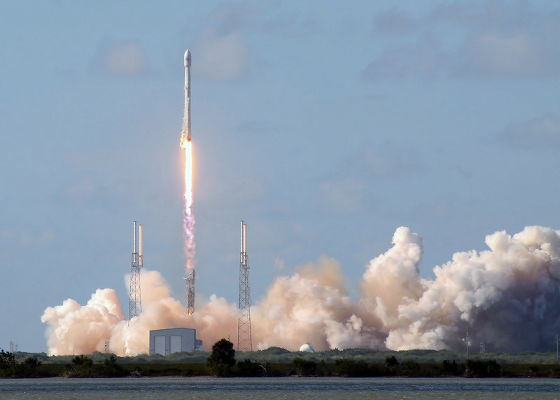NASA selects SpaceX's Falcon 9 to launch COSI, a gamma-ray telescope to study supernova explosions and element synthesis

The National Aeronautics and Space Administration (NASA) has selected
NASA Awards Launch Services Contract for Space Telescope Mission - NASA
https://www.nasa.gov/news-release/nasa-awards-launch-services-contract-for-space-telescope-mission/

SpaceX to launch NASA gamma-ray space telescope in 2027 | Space
https://www.space.com/spacex-launch-contract-nasa-cosi-space-telescope
NASA selects SpaceX to launch a gamma-ray telescope into an unusual orbit | Ars Technica
https://arstechnica.com/space/2024/07/spacex-selected-to-launch-nasa-mission-probing-the-creation-of-matter/
COSI is a gamma-ray telescope scheduled to be launched in 2027 and will observe gamma rays emitted by the explosion ( supernova explosion ) of a massive star and the end of its life. Supernova explosions trigger supernova nucleosynthesis, which creates heavier elements from light elements, and COSI data will also help map where these elements are synthesized in the Milky Way galaxy .
'This wide-field gamma-ray telescope will study energetic phenomena in the Milky Way and beyond, including the creation and destruction of matter and antimatter, and the final stages of the life of stars. NASA's COSI mission will explore the origin of positrons in the Milky Way, identify the site of nucleosynthesis in our Galaxy, study gamma-ray polarization, and find counterparts to multi-messenger sources,' NASA said.

COSI won the
NASA announced in a statement on July 2 that it had selected SpaceX as the launch operator for COSI. According to NASA, the launch of COSI is scheduled for August 2027, and the contract cost with SpaceX, including launch services and other related costs, is approximately $69 million (approximately 11 billion yen).
Technology media Ars Technica points out that COSI is a relatively small space probe weighing less than one ton, but it is characterized by its special orbit of 550 km above the equator. This orbit was chosen to avoid the Van Allen belts that affect gamma ray observations.
After launching from Cape Canaveral Space Station in Florida, the Falcon 9 will move sideways to put COSI directly into equatorial orbit. NASA chose SpaceX as the launch operator because the Falcon 9 was the only vehicle capable of launching a space probe as heavy as COSI in this way, Ars Technica explained.

By Jill Bazeley
Related Posts:
in Science, Posted by log1h_ik







